Meet M13, the Great Cluster in Hercules
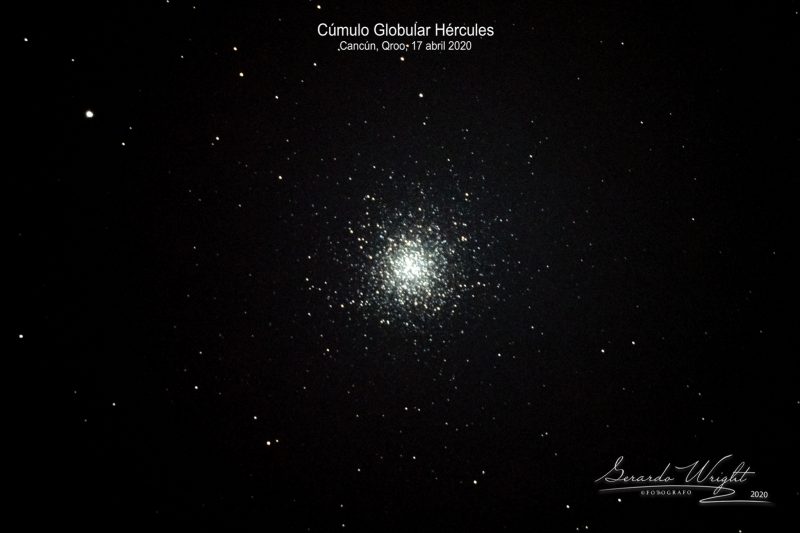
The Great Cluster in the constellation Hercules – also known as Messier 13, or M13 – is the finest globular cluster in the northern half of the heavens. More specifically, you can find it in a star pattern called the Keystone – a lopsided square within the constellation Hercules – between the two brightest stars of northern spring and summer, Vega and Arcturus.
Under constant observation
From mid-northern latitudes, the M13 cluster is in the sky for at least part of the night all year round. As you read this, someone, somewhere, is observing M13. In fact, it is above the horizon all night long in May, June and July. In August, September and October, the Hercules Cluster is still very much a night owl, staying up till after midnight. Then, in November and December, you can see it in your western evening sky and in your eastern morning sky. It is in the morning sky from January through April.
Moreover, when you gaze at M13 or other globulars, you are looking at stars that are some 12 to 13 billion years old. That’s almost as old as the universe.
M13 is easy to find
M13 is located in the constellation Hercules, between summertime’s two brightest stars, Vega and Arcturus.
About 1/3 of the way from Vega to Arcturus, locate the four modestly bright stars forming the Keystone of Hercules. On the Arcturus side of the Keystone, M13 lies between the stars Eta Herculis and Zeta Herculis.
A typical binocular field is about 5 to 7 degrees in diameter, and the Hercules cluster is found about 2.5 degrees south of Eta Herculis.
The Hercules cluster’s position is Right Ascension: 16h 41.7m; Declination: 36 degrees 28′ north.

What to expect from M13
On a dark, clear night, the unaided eye barely perceives the Hercules cluster as a faint and fuzzy point of light. Indeed, this fuzzy “star” is much easier to make out in binoculars. The cluster shines at magnitude 5.8 and is about 20 arcminutes in size, about 2/3 the diameter of the full moon.
The best way to see M13 – or any globular cluster – is through telescopes with large apertures (light-gathering capability). Smaller telescopes will show this globular cluster, but they will not resolve the cluster into individual stars. However, if you don’t have a telescope, or are unfamiliar with how to use one, try attending a public star party. That way you can view M13 through an assortment of telescopes.
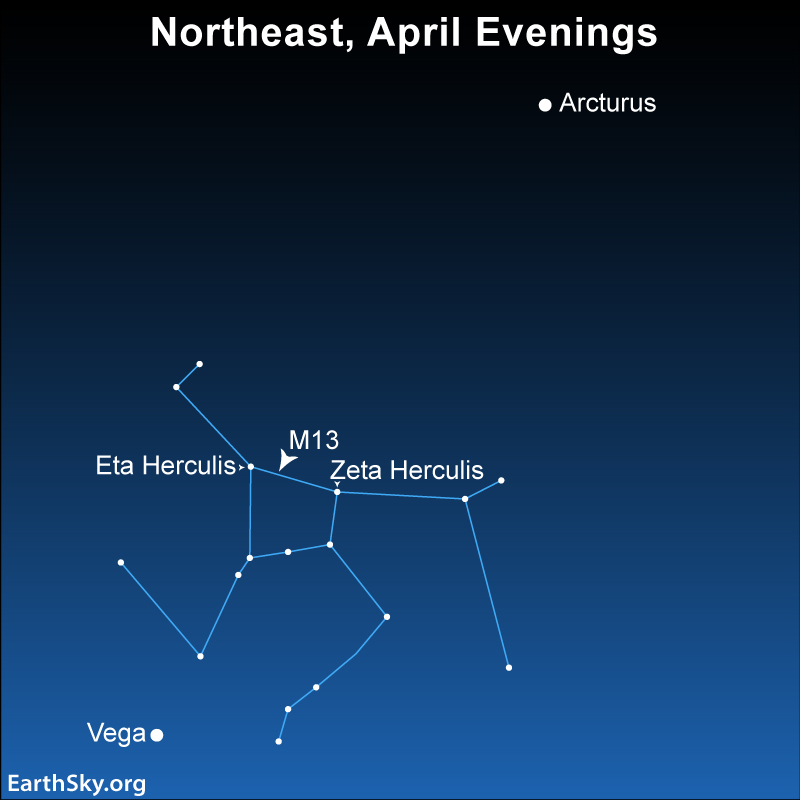
What’s that propeller doing in this cluster?
Now that we have M13 in our telescope, let’s look for an oddity unique to this globular cluster. In particular, it has what appears to be three dark lanes that form the shape of an airplane propeller. Bindon Blood Stoney, assistant to the Earl of Rosse in the 1850s, was the first to notice this odd feature. It is a pattern caused by the lack of stars along this particular line of sight.

Walter Scott Houston, who wrote a monthly column called “Deep-Sky Wonders” for Sky and Telescope magazine, mentioned M13’s propeller in 1953. From time to time he would mention it again; still, none of his readers reported ever seeing it. Finally, in 1980, American amateur astronomer John Bortle wrote that he saw it, and it is located on the southeast corner of the cluster. Aperture and magnification help in seeing it, because a large telescope and at least 200 magnification is necessary to bring it out from the background. Most photographs overexpose the area, and therefore the propeller disappears.
Counting stars
M13 is very far away, 25,000 light-years. This is several times farther away than the farthest stars you can see with the unaided eye. The light that you see left M13 some 25,000 years ago. And the cluster is large, about 165 light-years across.
Overall, how many stars does M13 have? About 300,000, and perhaps as many as a half million. In fact, that is about 100 times more than the number of stars you can see with your eyes alone in our sky at night.
Talking to a globular cluster
On November 16, 1974, the Arecibo radio telescope in Puerto Rico sent a radio message to M13. This was the first message deliberately sent toward a target in outer space. Designed by a team led by Frank Drake, the message communicated information about our world. Read more about the message here. It will take 25,000 years for the message to reach the cluster. Correspondingly, any response will take another 25,000 years to reach us.
Two types of clusters
M13 is a globular star cluster, a huge globe-shaped stellar city teeming with hundreds of thousands of stars. Globular clusters orbit the Milky Way galaxy outside the galactic disk at tens of thousands of light-years away. In contrast, the relatively nearby Pleiades and Hyades are open star clusters that reside within the galactic disk. In general, they usually harbor a few hundred to a thousand stars.
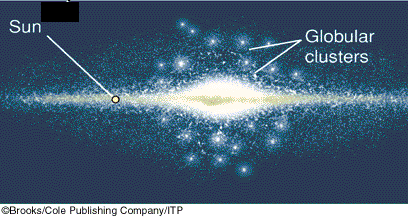
The discovery of M13
Englishman Edmond Halley discovered this cluster in 1714 “by help of the telescope.” He stated:
This is but a little patch, but it shows itself to the [unaided] eye when the sky is serene and the moon absent.
On June 1, 1764, the famous French comet hunter Charles Messier (1730-1817) listed this object as number 13 in his catalog of nebulous objects. He described it as:
… A nebula which I am sure contains no star. Round and brilliant, center brighter than the edges.
Messier’s telescope, however, was not powerful enough to show the individual stars.
In the centuries since then, M13 has become the most observed globular cluster in the Northern Hemisphere.
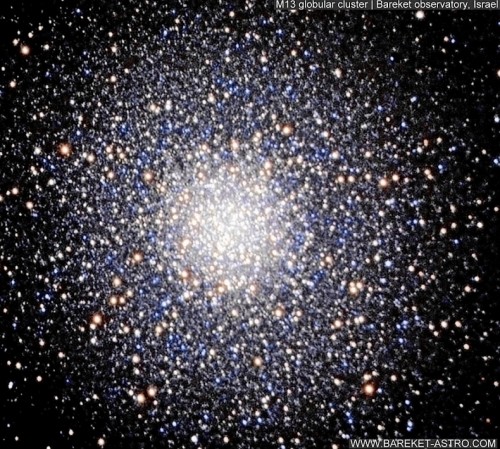
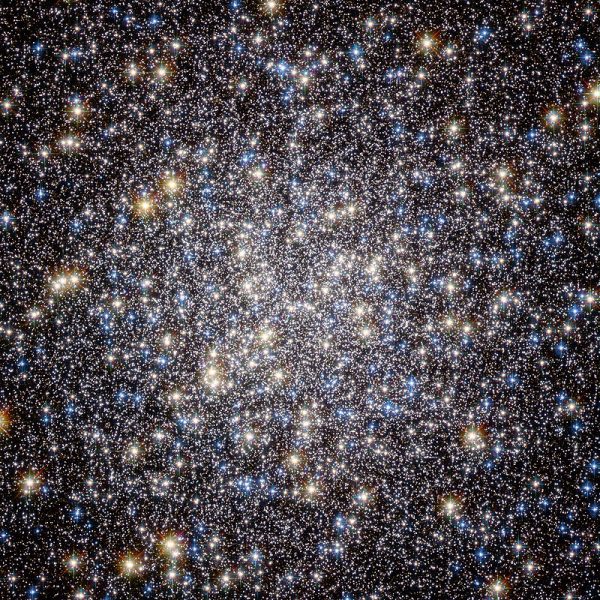
Bottom line: Meet M13, the Great Hercules Cluster. Peering at this globular cluster is a wonderful way to start your spring or summer evening.











